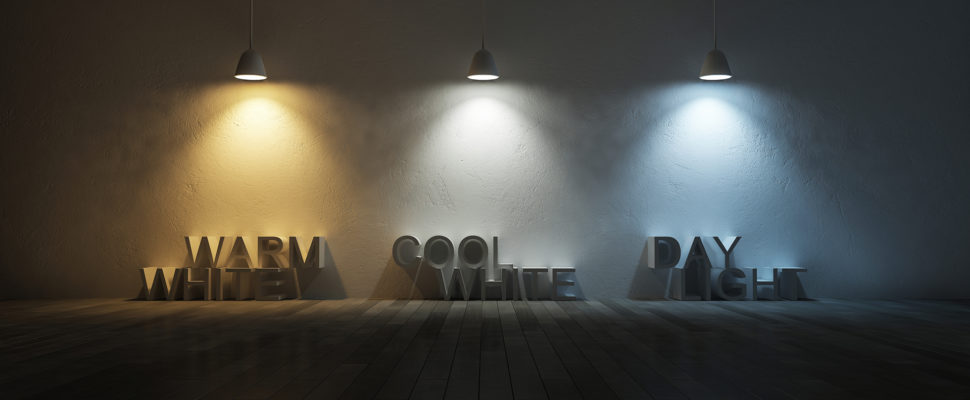
What is light temperature?
Colour temperature is a way to describe the light appearance provided by a light bulb. It is measured in degrees of Kelvin (k) on a scale from 1,000 to 10,000. Typically, Kelvin temperatures for commercial and residential lighting applications fall somewhere on a scale from 2700k to 6500k.
What colour temperature is right?
Understanding kelvin temperature (k) makes it easier to choose lighting that gives you the look and feel you want. At the lower end of the scale, from 2700k to 3000k, the light produced is called “warm white” and ranges from orange to yellow-white in appearance. Colour temperatures between 3100k and 4500k are referred to as “cool white” or “bright white.” Above 4500k brings us into the “daylight” colour temperature of light.

With this ability to mimic any time of day, light temperature can have a big impact on an individuals mood and should be considered carefully.
How exactly do light temperatures apply to your home or workplace?
Warm Light Temperatures (2700K-3500K)
This is the light that you are probably most familiar within a residential or restaurant application. The warm glow of lower colour temperatures is often reminiscent of the sunset or the glow of a fire. Apply those light temperatures in living rooms, bathrooms, restaurants, hotels, kitchens, retail stores, etc.

Neutral/Natural Light Temperatures (4000K-4500K)
Sometimes, a warm and cosy environment is not appropriate for the job at hand. When you need precision and the ability to see your subject clearly, cool white lighting is ideal. These colour temperatures are going to be above 4100k. You can apply this range of light temperatures in a garage, grocery stores, offices, etc.

Cold Light Temperatures (5000K-6500K)
5000k colour temperature is approaching the intensity and clarity of sunlight and is best used in professional spaces where exactness is necessary. These light temperatures are ideal for sport centres, warehouses, healthcare institutions, indoor agriculture, etc.